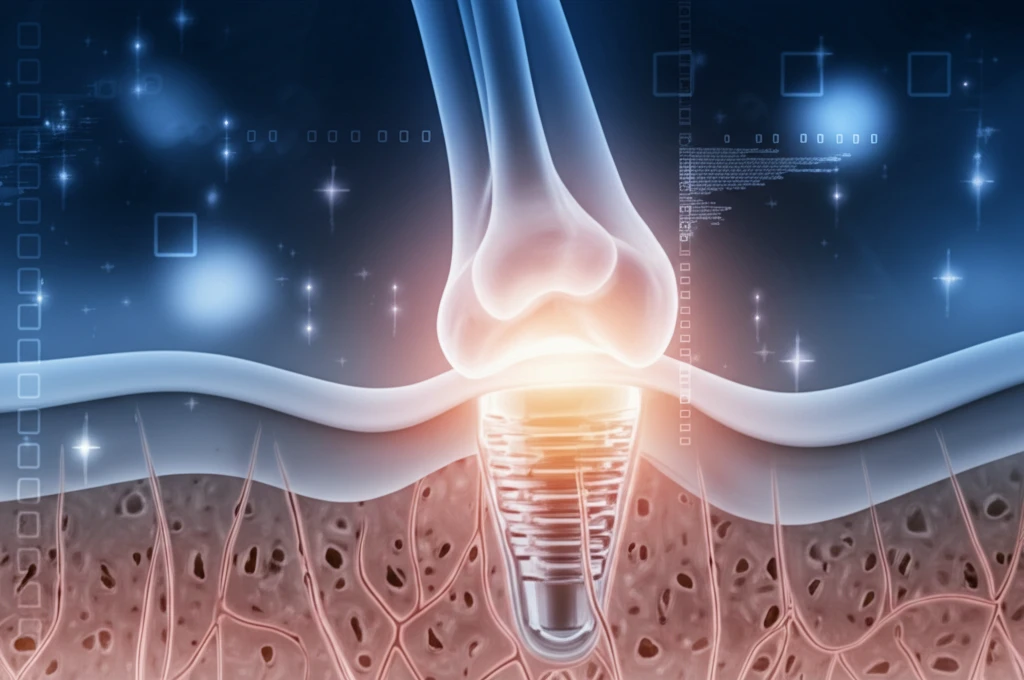
Stronger Bones: The Secret of HAp-ZrO2 Composite
"Discover how Hydroxyapatite-Zirconia composites are revolutionizing bone implants with superior strength and biocompatibility."
For those of us navigating the complexities of bone health, whether due to age, injury, or chronic conditions, the quest for stronger, more reliable bone implants is paramount. Innovations in biomaterials offer hope and tangible solutions. One such advancement lies in the development of Hydroxyapatite-Zirconia (HAp-ZrO2) composites, engineered to mimic natural bone and provide enhanced mechanical properties.
Hydroxyapatite, a naturally occurring mineral and a primary component of bone, has long been celebrated for its biocompatibility. It encourages bone growth, making it an ideal material for implants. Yet, HAp alone lacks the necessary strength and toughness for load-bearing applications. This is where Zirconia steps in, fortifying HAp with its superior mechanical properties, resulting in a composite material that not only integrates well with the body but also withstands significant stress.
This article delves into the science behind HAp-ZrO2 composites, exploring how varying the composition of these materials affects their performance. We'll examine the mixing and rheological behaviors of these composites, shedding light on why they are increasingly favored in orthopedic applications. Whether you’re a patient, caregiver, or simply interested in the future of bone health, understanding HAp-ZrO2 composites is essential.
The Science of HAp-ZrO2 Composites

The creation of HAp-ZrO2 composites involves a meticulous process of combining Hydroxyapatite with Zirconia. The goal is to harness the biocompatibility of HAp and the mechanical strength of ZrO2. Researchers carefully adjust the proportions of each material to achieve optimal performance. Common compositions include 90-10, 80-20, and 70-30 ratios of HAp to ZrO2, each influencing the final product's characteristics.
- Composition Ratios: Balancing HAp for biocompatibility and ZrO2 for strength.
- Mixing Techniques: Ensuring homogenous distribution of materials.
- Particle Size: Optimizing particle size for better packing and sintering.
- Processing Conditions: Controlling temperature and pressure during manufacturing.
Future Directions in Bone Implant Technology
HAp-ZrO2 composites represent a significant leap forward in bone implant technology. By combining the best properties of Hydroxyapatite and Zirconia, these materials offer enhanced biocompatibility and mechanical strength, leading to better patient outcomes. As research continues, we can expect even more refined compositions and processing techniques, further optimizing the performance of these implants and paving the way for more effective bone regeneration and repair.
